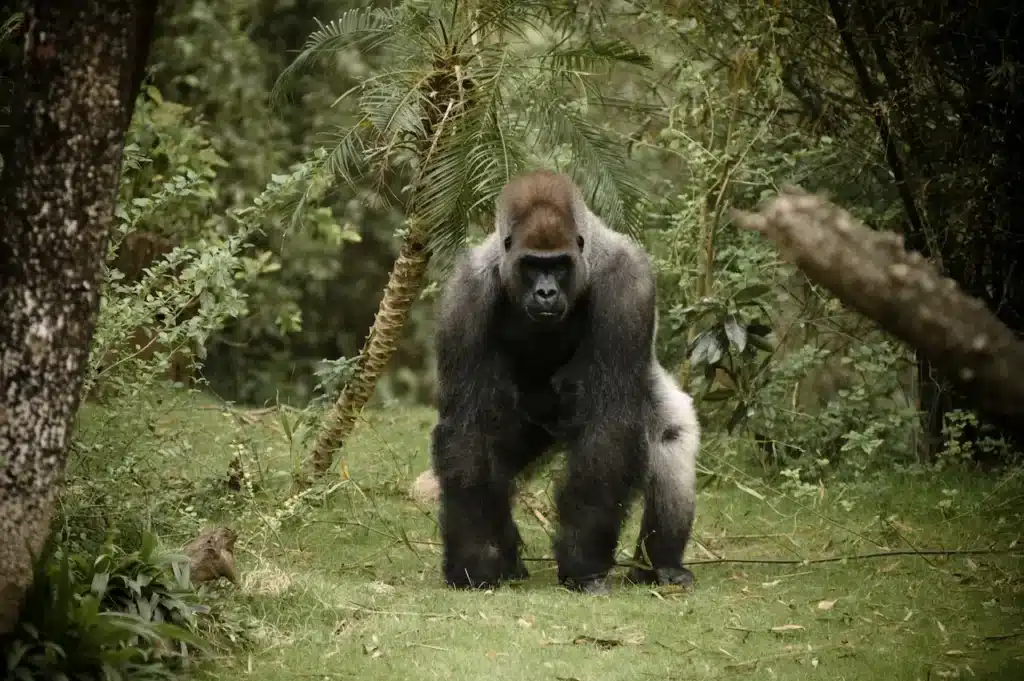What Killed the Real-Life King Kong? The Extinction of Gigantopithecus
Imagine a creature so enormous it could rival the fictional King Kong, towering over three meters tall and weighing as much as 500 kilograms. This was Gigantopithecus, an ape that roamed the tropical forests of what is now southern China millions of years ago. For up to nine million years, this giant thrived in its lush habitat, but something caused its sudden extinction around 100,000 years ago. What could have brought down such a mighty beast? According to new research, it was the very size that once gave it an edge that eventually became its downfall.
The Rise of Gigantopithecus
Gigantopithecus was truly a marvel of nature. Standing as tall as a modern-day giraffe and weighing more than a car, it would have been an imposing sight. It lived during the Pleistocene epoch, a time of shifting climates, and dominated the forests it called home. Its size offered several advantages: it had fewer natural predators, and it could cover vast distances in search of food. But, as it turns out, its sheer mass would soon be its greatest vulnerability.
Like many large animals, Gigantopithecus was primarily herbivorous, relying on a diet of fruits, leaves, and other plant matter. The dense tropical forests of the past offered plenty of food to sustain its colossal frame. But as the climate began to change, so too did its environment. Over time, forested areas shrank, and savannas—grasslands with far fewer trees—began to spread.

The Fatal Handicaps of Size
As the Earth entered the latter stages of the Pleistocene ice ages, these environmental shifts posed a major challenge to species that depended on specific types of food. Gigantopithecus, a fruit-eater with specialized dietary needs, found itself in trouble. The forests that it had once called home were transforming into open grasslands, and the vegetation it relied on simply couldn’t keep up with the size of its needs.
According to Herve Bocherens, a researcher at Tübingen University in Germany, the massive ape’s dependence on a large quantity of food became a critical issue. “Due to its size, Gigantopithecus presumably needed a large amount of food,” Bocherens explained. As forested landscapes gave way to savanna, there simply wasn’t enough food to sustain such a massive creature.
The problem, as Bocherens points out, wasn’t just that the giant ape couldn’t adapt to the changing environment—it was that being so large left it with fewer options for survival. Smaller primates, such as orangutans, were better suited to cope with changes in their environment due to their slower metabolism and ability to survive on limited food sources. But Gigantopithecus, with its enormous body, couldn’t make do with the grass, roots, and leaves that now dominated the landscape.
The Perils of Being Big
Gigantopithecus’ fate highlights an important lesson in evolution: sometimes, the bigger they are, the harder they fall. While being large certainly has its advantages, it also comes with significant long-term risks. As Aaron Clauset, a computer scientist at the University of Boulder, explains, bigger animals tend to have fewer offspring. This means their populations are often smaller and more vulnerable to fluctuations in food supply or climate. A sudden change in the environment can have a devastating impact on these species, pushing them toward what Clauset calls “demographic death.”
Interestingly, Clauset’s research reveals that extinction rates tend to increase as species grow larger. Gigantopithecus, along with other giant creatures like the giant sloth, is a prime example of how size can become a liability in the face of environmental change. As species approach their maximum size, they reach a point where any small disruption—such as a change in climate or food availability—can tip the balance toward extinction.
Why Didn’t Gigantopithecus Survive?
It’s natural to wonder why Gigantopithecus couldn’t pull through like some of the other large species that have managed to persist in the face of change. Dinosaurs, for example, thrived for millions of years despite their immense size. Why couldn’t Gigantopithecus do the same? The key difference, as Clauset explains, lies in the basic biology of mammals. Unlike cold-blooded reptiles, mammals are warm-blooded, meaning they require more energy to maintain their body temperature. This higher metabolic rate means they need more food to survive, and when resources are scarce, larger mammals are the first to suffer.
Gigantopithecus may have been able to survive in a more stable environment, but the dramatic climate shifts of the Pleistocene proved too much for it to handle. Its specialized diet, coupled with its massive size, simply couldn’t adapt to the changing world.
The Lesson of Gigantopithecus
The extinction of Gigantopithecus is a stark reminder that size isn’t always an advantage in the natural world. While bigger animals may have certain short-term benefits, those advantages can become a double-edged sword when the environment changes. Gigantopithecus’ downfall shows how evolution is not just about surviving, but about the ability to adapt. And when a creature like this giant ape fails to adjust to a shifting ecosystem, it finds itself facing extinction.
In the end, Gigantopithecus serves as a cautionary tale of the risks of extreme size in the ever-changing dance of evolution. The next time we marvel at the size of modern-day animals or imagine creatures like King Kong, we should remember the real-world giant that couldn’t survive the test of time.